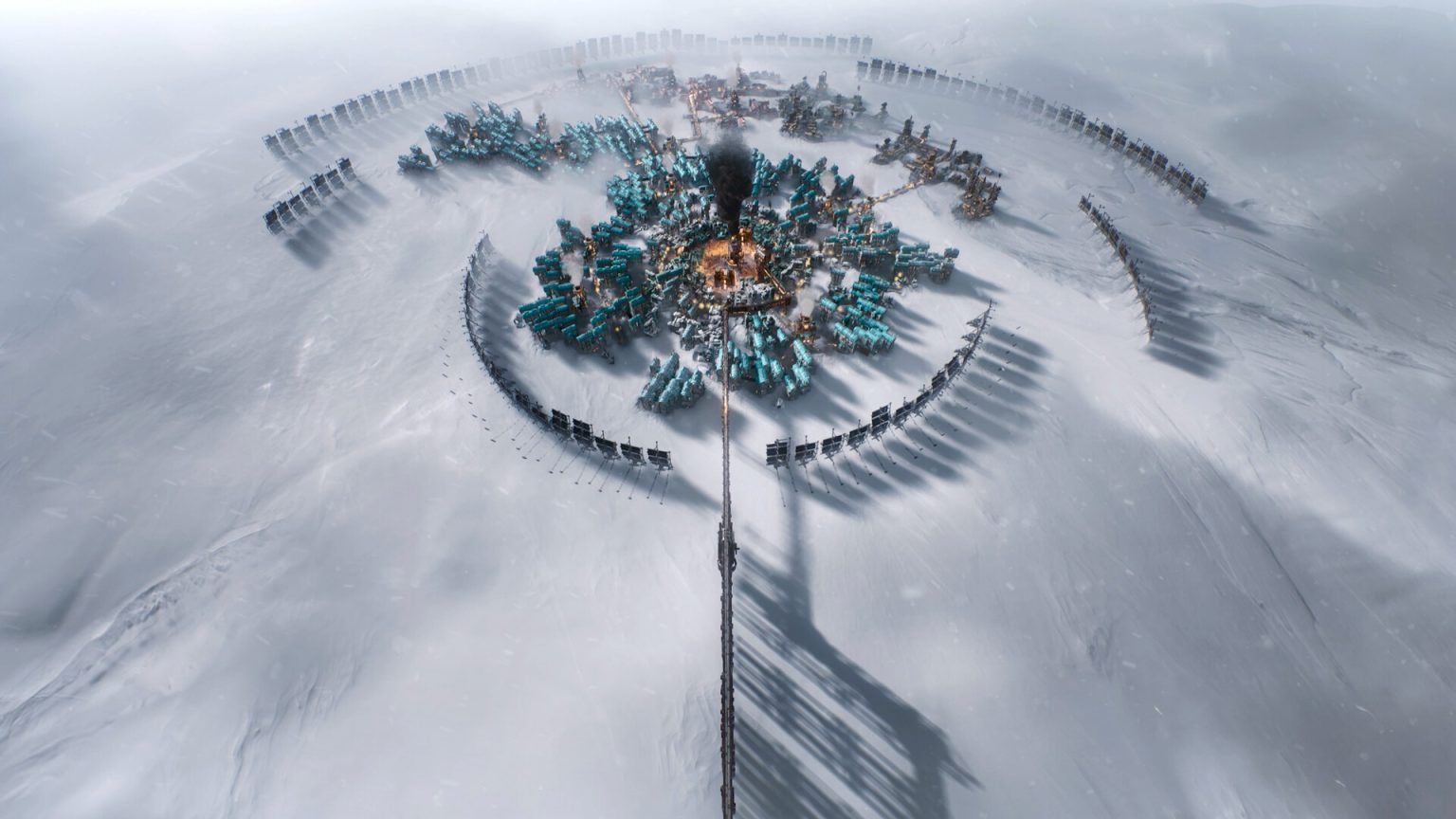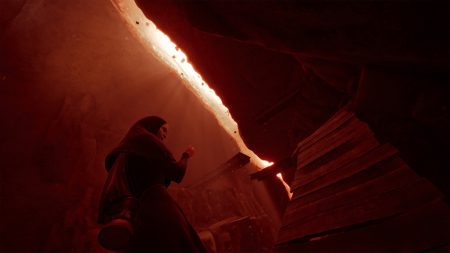“The first rule of leadership is that everything is your fault.”
This quote could easily be from a sociopolitical text, but it’s actually from the 1998 Disney film A Bug’s Life. My family has been quoting it for over 15 years (it got a lot of use during the recent U.S. presidential debate). Hopper, a violent but productive fascist grasshopper, lectures Princess Atta, a compassionate but struggling ant leader, telling her how she must take accountability for her choices. While playing the upcoming Frostpunk 2, I often remembered this quote as I grimaced when the people of New London complained in the streets about their Steward, knowing all the while I had made the best choices with what I had.
Frostpunk 2 is a gorgeous, intricate city survival management sim that is as devastating as it is complicated. This stellar sequel by 11 Bit Studios, based out of Warsaw, releases this Friday, September 20. Frostpunk 2 is sure to be a hit for fans of the first or the curious, but it is not a game, in any way, for the faint of heart.
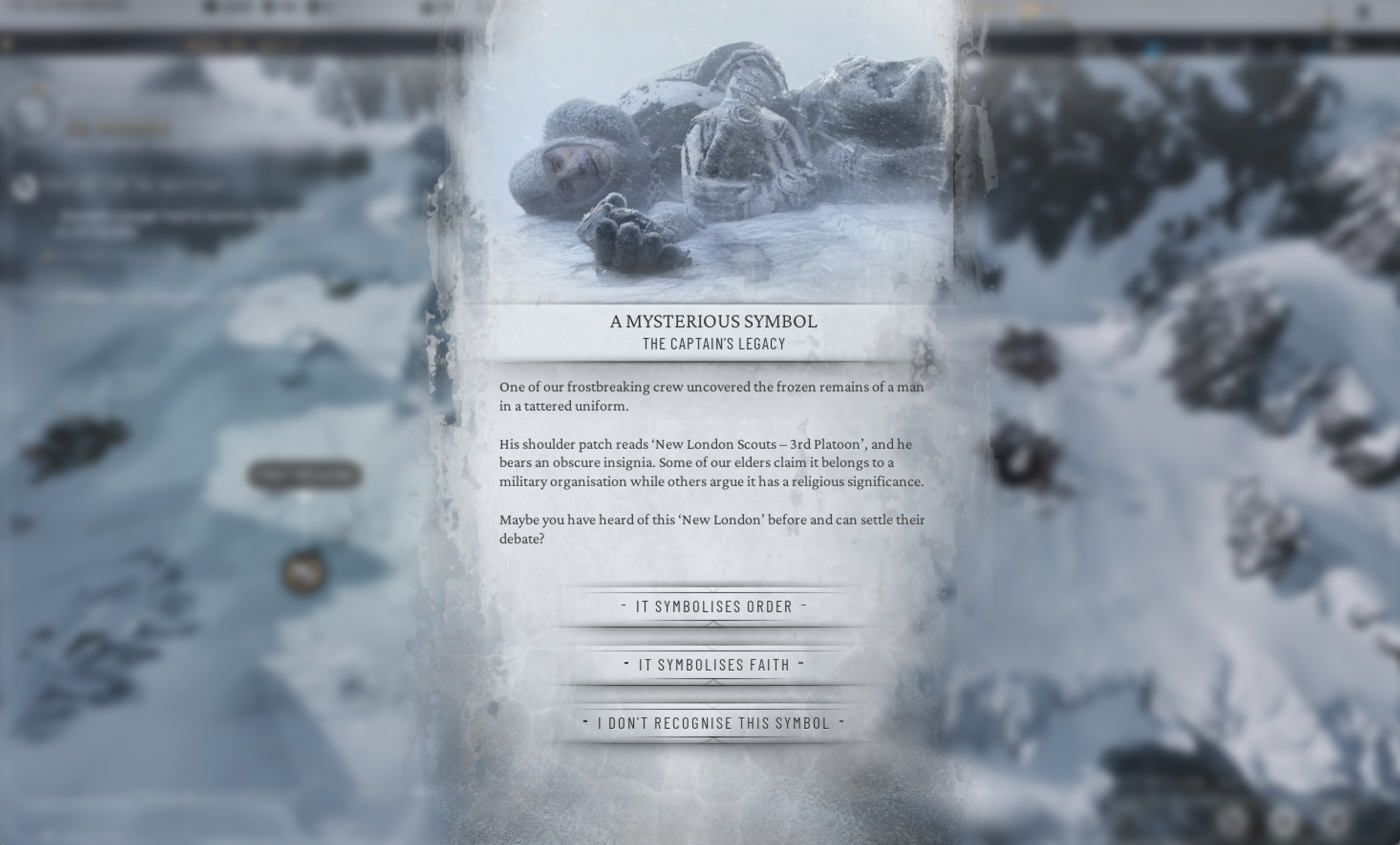
Winter Is Coming
Frostpunk 2 begins with a gorgeously animated and grim cinematic, leading players into a prologue where a group of “Wanderers” are trying to survive a massive whiteout. In Frostpunk 2′s prologue, players may find memorabilia from a past city in the snow.
In the 2018 hit Frostpunk, also developed and published by 11 Bit Studios, players built a city called New London. With city management and base-building games, there’s always that weird question of, “Who am I? Am I playing a ruler, or, like, a god, or just sort of ‘the spirit of the people’…?” Frostpunk cleverly got around this by having players be an authoritarian Steward who was trusted to make unilateral decisions. But times have changed.
In chapter one of Frostpunk 2, the player is introduced to New London in its “current” heyday. Now, in 1912, New London is a bustling metropolis. The inaugural Steward (presumably, the first game’s lead) has just died, and citizens are rising up to design their future. New London is in a new era.
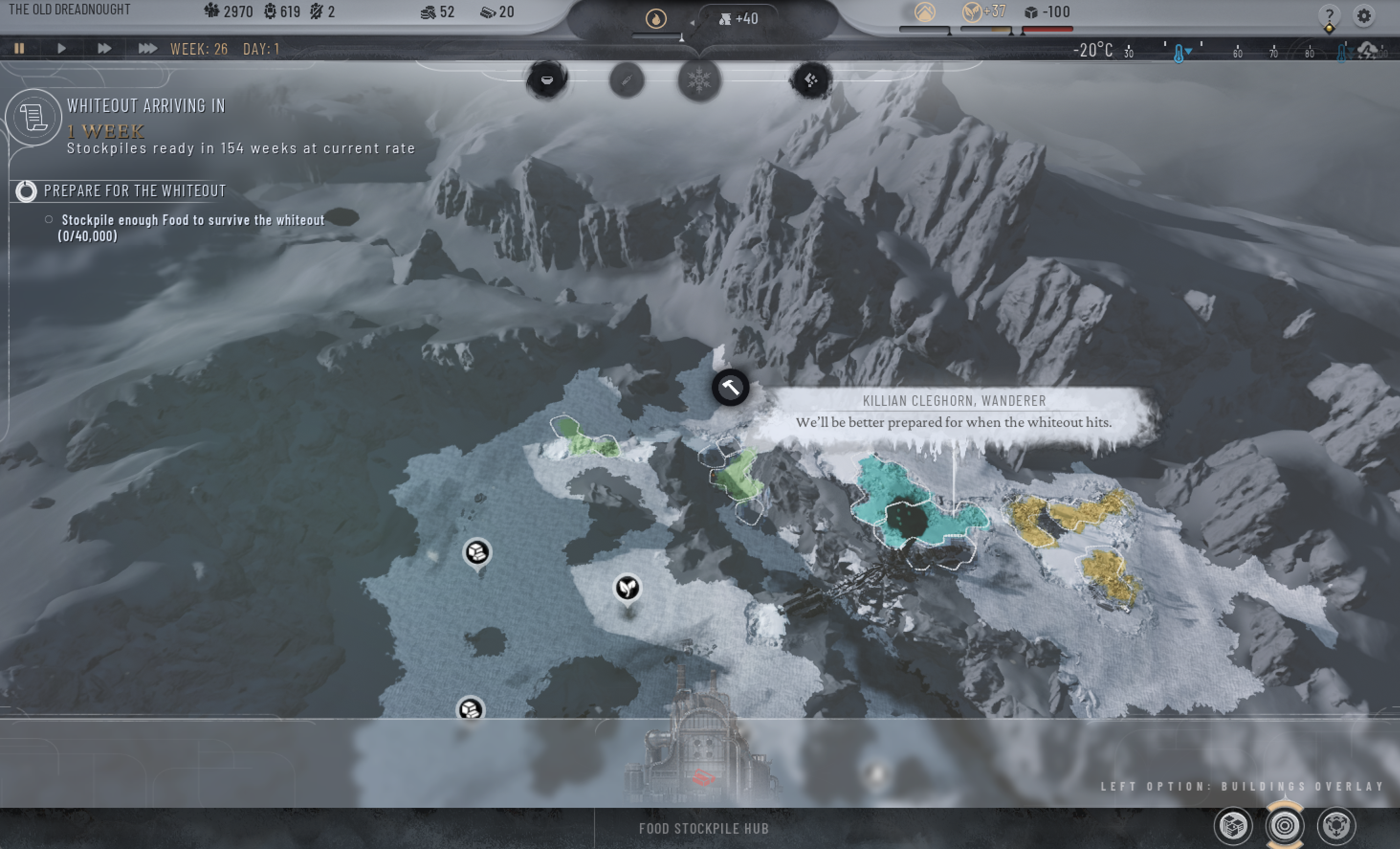
Herein lies the two biggest changes between Frostpunk and Frostpunk 2: the city, and your relationship to it. First, the city already exists at a foundational level, and so, rather than making individual buildings, you’ll be developing districts (where specific buildings can be added within). You can also create outposts and explore beyond the immediate map into unknown and dangerous areas known as the Frostlands. Secondly, and this is the big kicker, players no longer have total control. Instead, there is now a city council and a myriad of factions to monitor.
This is, quite literally, a game changer.
The People Have Spoken
Frostpunk 2 invites players into the trials and tribulations of democracy. A council meets every 10 weeks to enact new laws, and this also includes status updates on how you’re doing as a Steward. If a big enough percentage of the population doesn’t approve of your leadership, you’ll be overthrown, and it’s game over.
Weeks in the game pass in seconds/minutes (depending on how quickly you speed forward), and the main story levels are built around ticking clocks of how many weeks are left to a certain event. I often found myself waiting to get to a Council meeting or dreading the upcoming vote because I knew the measure I was trying for wouldn’t pass.

The Council system is impressive and difficult to manage. Votes are not guaranteed, and there’s many ways to negotiate the deal you hope to see for the city. Laws are separated into a few menu categories, which are in themselves separated into specific interests. For example, early on, my citizens noted rising tension about how funerals were handled in the city. One faction wanted to have religious and grieving ceremonies, and another wanted to use bodies to process for medical research. Each law has tangible effects on situations in the city, like workforce morale, disease, squalor, and productivity in resource development. And it doesn’t stop there.
Closely paired with the Council is a “Research” system. Different factions will suggest ideas, often opposing approaches to the same problem. Fans of Civilization V and VI will be particularly pleased with this added element to the Frostpunk franchise. For example, one group wanted me to develop ventilation towers to make the air quality better for residential neighborhoods, but another wanted me to create gas guzzling public transportation to funnel those same residents to get to work faster. Oftentimes, in order to make a Council vote pass, I had to make promises with a group like the Stewards—order-driven people focused on progress—to research what they cared about next and ensure it would be the item on the Council’s vote docket.
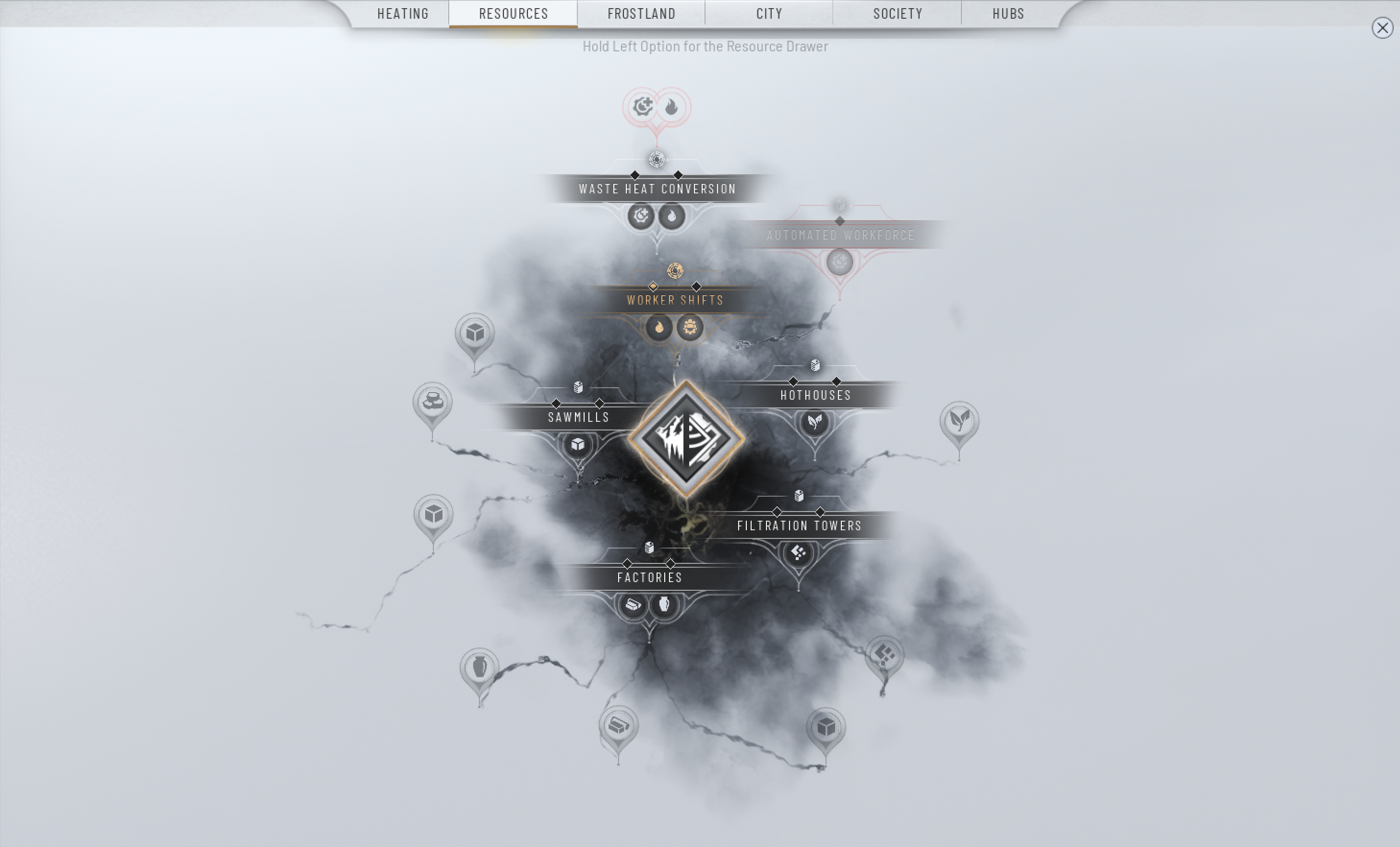
Decisions are not made in a vacuum. They have tangible impacts on the people of New London. When gangs of roving children led to increased crime, I passed a law for mandatory schooling. A voice spoke over citywide loudspeakers, announcing the Steward’s new law. Some were frustrated I had not pressed the children into the workforce, and so my available worker pool went down and energy costs went up as I paid for school. But I also heard people speak up in the streets with enthusiasm about their children getting to go to school, and after several weeks, a pop-up of a girl in school indicated that she was inspired to write books and research as an adult.
Frostpunk 2 does an incredible job at making New London feel alive with moments like that, and this is achieved through its sprawling, unorthodox interface.
All (Snow) That Glitters Is Gold
Frostpunk 2′s aesthetic is notably stronger and bolder than its predecessor. Chapters are announced with large totalitarian fonts covering the screen. When individuals in the community speak up, half of their portrait is shown, a wispy smoke rising around their faces.

Some of the character pop-ups are appropriately devastating, and some feel a little heavy-handed with their writing. Still, each one communicates a sense of urgency. Soon, every time a little black pop-up appeared somewhere in my city with a gold shape, indicating me that there was a situation to monitor, I found myself holding my breath, steeling myself for whatever was about to come. I was especially conflicted during the game’s prologue when a wanderer noticed a population of seals and wondered if we should hunt them or admire them that they too, amazingly, have survived the apocalypse.
All of this is made great by artwork that appears in pop-ups or occasional cinematics. That opening film I mentioned at the beginning of the game? It has some of the most detailed rendering of the human face I’ve ever seen. There’s great details in the writing, too. In the Council room, players can click on any of the 100 people sitting in the room and click on them for mini-bios (which appear to be randomized, but are fun nonetheless) for some extra flavor and world-building. Frostpunk 2 makes the devastation of survival beautiful, not dissimilar from Disco Elysium.
To achieve this, the game has some intense graphic standards. That being said, I was playing toward the lower end of Frostpunk 2‘s spec requirements on a MacBook Air, and it still looked amazing. Some textures popped in and out, but I didn’t mind. It was occasionally difficult to find what I was looking for or notice depth difference, especially because most of the landscape is varying levels of white, but again, it wasn’t a critical issue. It’s also worth noting that I didn’t run into any bugs on my playthrough.
Frostpunk 2 is immersive in sound as well. When near industrial districts, sounds of machinery clamor. In the Council building, there’s the sound of discussion. Zoom in close to the city, and you’ll hear the sounds of people rumoring or talking in the streets, and the leading factions making announcements over loudspeakers. The original soundtrack of Frostpunk 2 is by the same composer as the first, Piotr Musial. There are gorgeous, rich scores that induce great heights with sweeping ups and downs, and add tension with a single, nervous violin threading throughout.
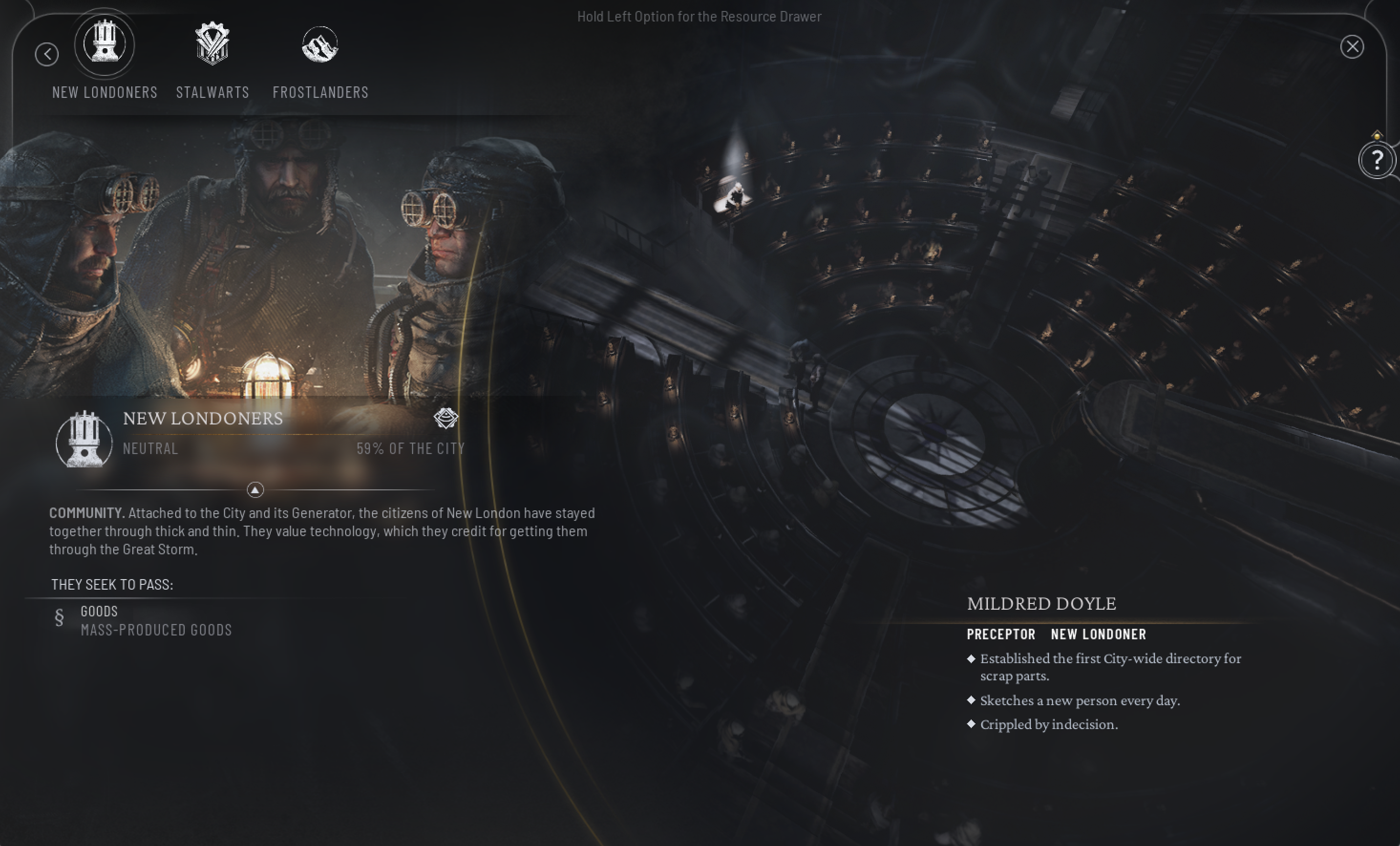
The mood of Frostpunk 2 is subtly and masterfully managed by the music and sound. The mood is not a relaxing one, and whether or not that’s a good thing depends on why you play games in the first place.
Frostbite
There is a truly dizzying amount of details for players to manage in Frostpunk 2. I was playing it today before I went to work, and I was so stressed at one point that I thought, I’d actually just rather go to my job now.
At first, I tried to keep track of everything (Do I have enough prefabs to build this food storage hub? Do I have enough workers to frostbreak through to that oil deposit? Is everyone housed?) and only make decisions when on pause. Eventually, I just let it go and let the city tick along quietly in the background while I did the best I could.
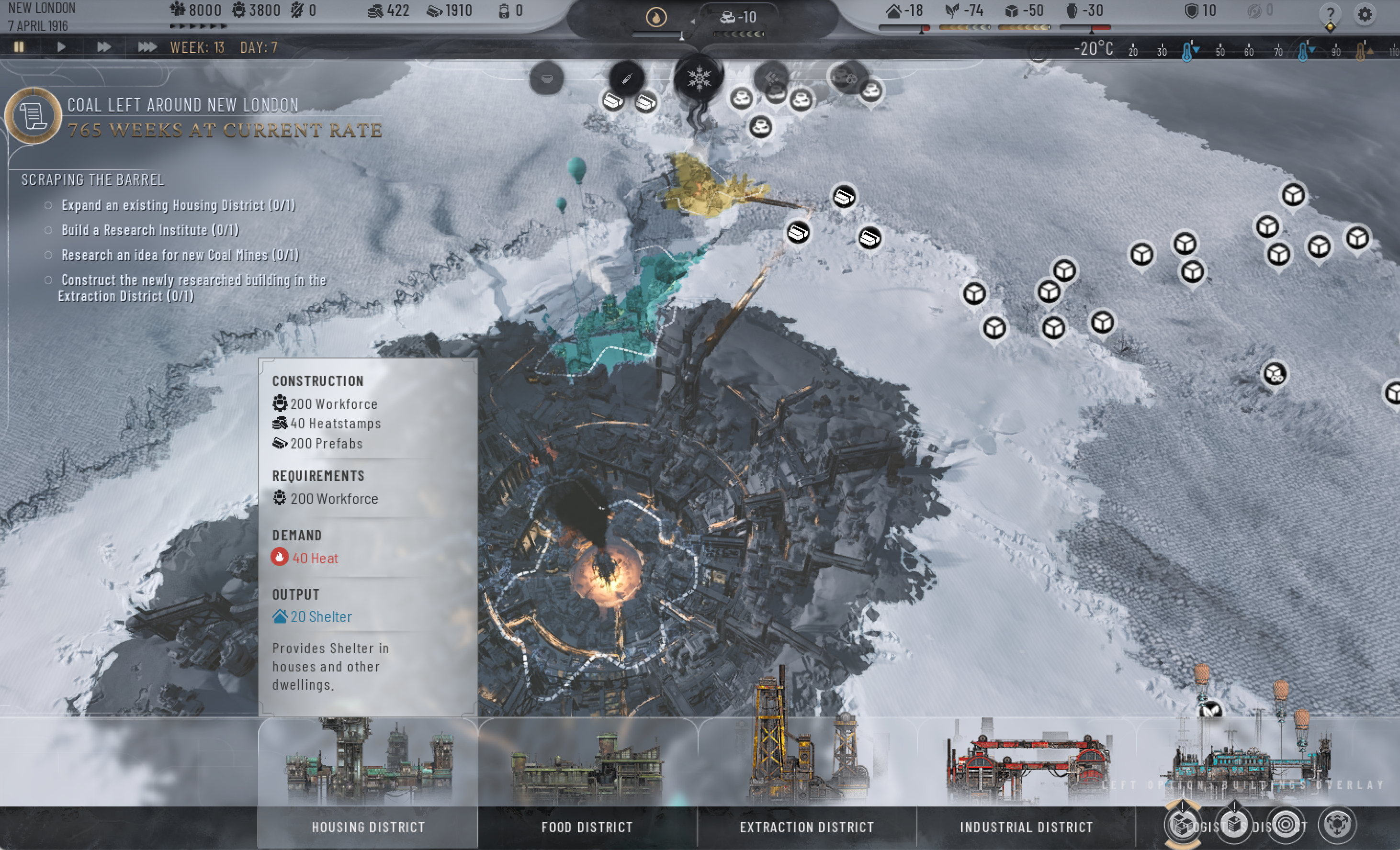
Players expand through frostbreaking and then building (and managing) districts, and then within districts, occasional buildings that can be researched and then added like hospitals or greenhouses or drills. Each land space is a hexagonal spot, a common feature in city-building games, and these tiles can have benefits or deficiencies based on what you build where. Then, as I mentioned, There’s the closely linked Research and Council systems. There’s expansion into the Frostlands. There are constant trackers of factors like heat, housing, and food, along the top menu bar you can see in the screenshot above. There was so much going on that I regularly forgot to get enough oil for my city and people would freeze to death.
I was doing such a bad job that, when I lost my first save file, I was honestly happy for it and glad to start over again. Right now, on Steam, Frostpunk 2 only supports cloud saves. It’s a weird decision given you can play offline, but can’t save anything. It’s a massive game that consumes a lot of battery power, so it would be convenient for the on-the-go gamers if we could save offline, like on an airplane. There are some other technicalities like this that were a little annoying, but nothing else that was a significant problem for me.
Frostpunk 2 could be the new ideal for anyone who wants to run their own universe, though it may not really be for anyone else. And that’s okay; not every game needs to be for everyone. Even me, someone who enjoys city-building games, found this one overwhelming and I genuinely just got tired of the number of pop-ups and menus. In my first hours with the game, I felt like I was learning a new game every 20 minutes, which reminded me of a horrifying truth about myself: I hate following instructions.
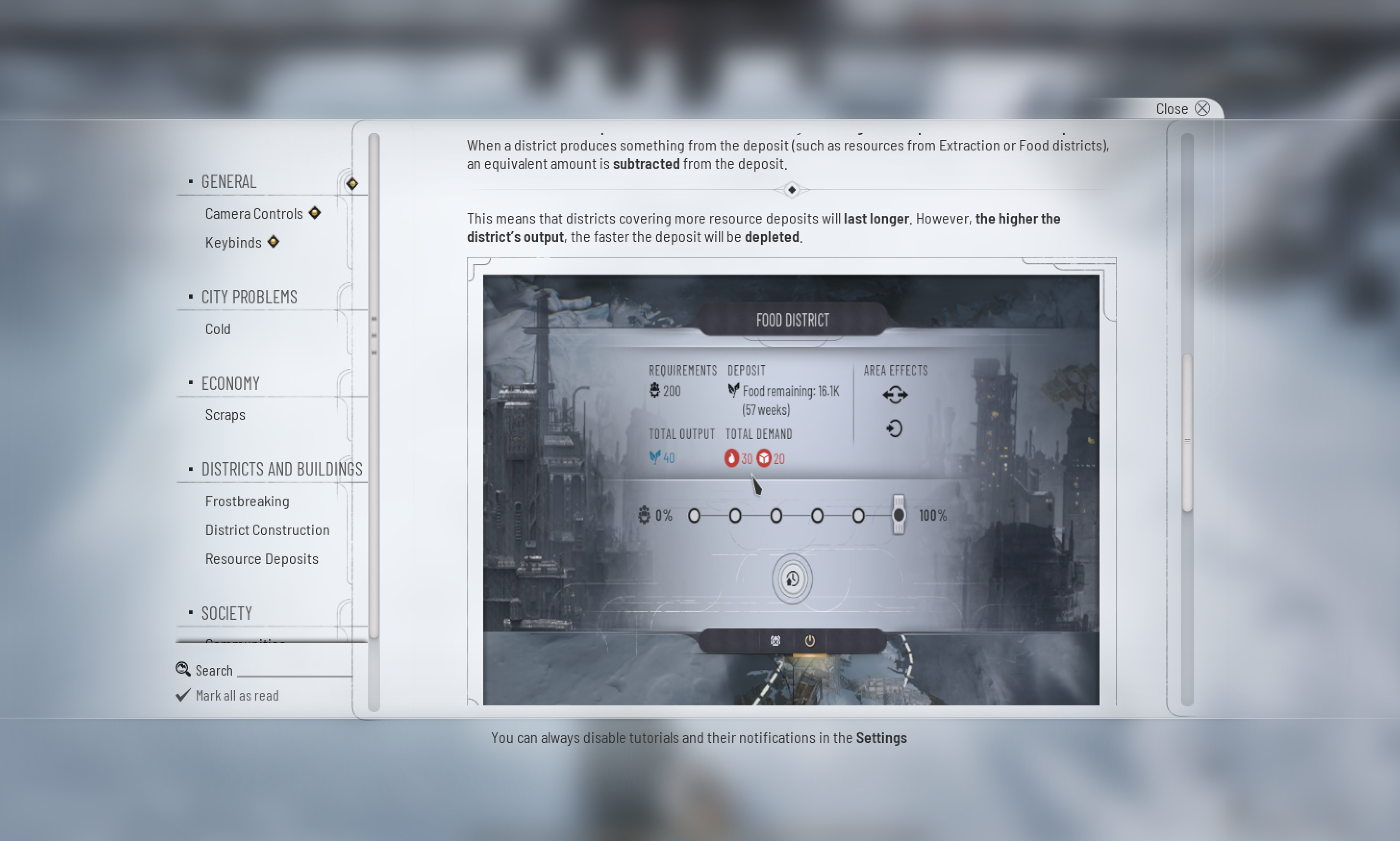
When I see a recipe, my eyes glaze over. As someone’s telling me how to do something, I hear the Peanuts wah-wah-wah talking sound. IKEA furniture booklets are my nemesis. I don’t know what it is about my brain but I have a hard time with structured, A-to-B flows of information. Copy-editing is really difficult for me (as my fellow Editors here can attest to; thanks/sorry guys lol); rules just kind fade in the background. So, suffice to say, the dozens of tutorial pop-ups in Frostpunk 2 were tough for me.
There are several difficulty levels in Frostpunk 2, which is good, because I needed as much forgiveness as possible. Still, I failed the prologue twice—ON EASY MODE!—before I made it through, even after making many sacrifices. Rather than dispiriting me, though, I found myself wanting to try again with Frostpunk 2—a better world felt possible. And that hope is tangible both within and outside of the game.
Winter Is Here
Everything about Frostpunk 2 is more. More choices to make, more buildings to add, more places to explore, more devastation, more opportunity, more resources to manage. As the city grows, it literally becomes impossible to see the city all at once, effectively communicating that feeling of being overwhelmed. But there’s also more hope. Citizens may get mad at you, but they’ll also show gratitude, enthusiasm, and curiosity. Wanderers in the Frostlands will be ecstatic to find New London and call it their new home. Collaboration is possible.
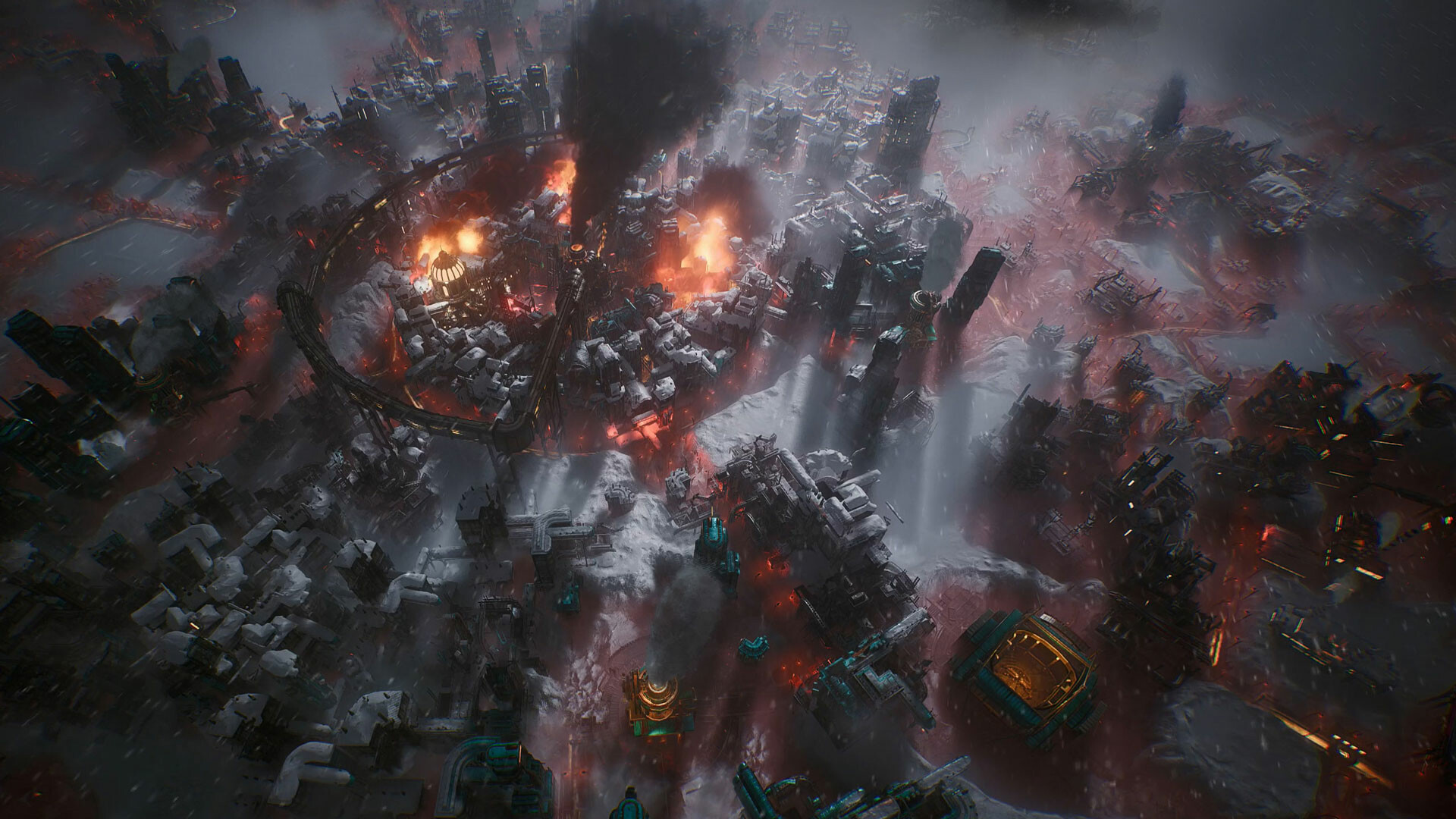
11 Bit Studios should be extremely proud of Frostpunk 2; it’s an intoxicatingly detailed and beautiful survival management game. For those who do want more Frostpunk, Frostpunk 2 delivers and then some. Fans of hyper detailed empire builders like Crusader Kings III will rejoice, and these added social elements may delight fans of Sid Meier’s Civilization series.
The array of laws and choices means Frostpunk 2 is hyper-replayable, for those interested in that sort of thing. Just a glance at the Steam Achievements list makes it clear that there’s a lot you can do and different approaches you can take. I’m already considering what I’ll do next time.
In leadership, everything is your fault. But on the flipside, with your dedication, anything is possible.
Score: 8.8/10
Frostpunk 2, developed and published by 11 Bit Studios, launches on Friday, September 20, on PC, Mac, PlayStation 5, and Xbox Series X|S. MRSP: $44.99; it is also confirmed to launch on Game Pass.
Disclaimer: A review code was provided by the publisher.
Amanda Tien (she/her or they) loves video games where she can pet dogs, punch bad guys, make friends, and have a good cry. She started writing for the site in 2020, and became an editor in 2022. She enjoys writing about mystery games, indies, and strong femme protagonists.
Her work has also been published in Unwinnable Monthly (click here to read her cover feature on Nancy Drew games), Salt Hill Journal, Poets.org, Litro Magazine, Public Books, and more. She was the Co-Founder and Editor-in-Chief of Columbia University's Culinarian Magazine, and served for two years as the Managing Editor of Aster(ix) Literary Journal.
She recently graduated with a MFA (Master of Fine Arts) in Creative Writing from the University of Pittsburgh. Her writing, art, graphic design, and marketing work can be viewed at www.amandatien.com.
She does not post a lot on social, but you can find her on X and on Instagram.


